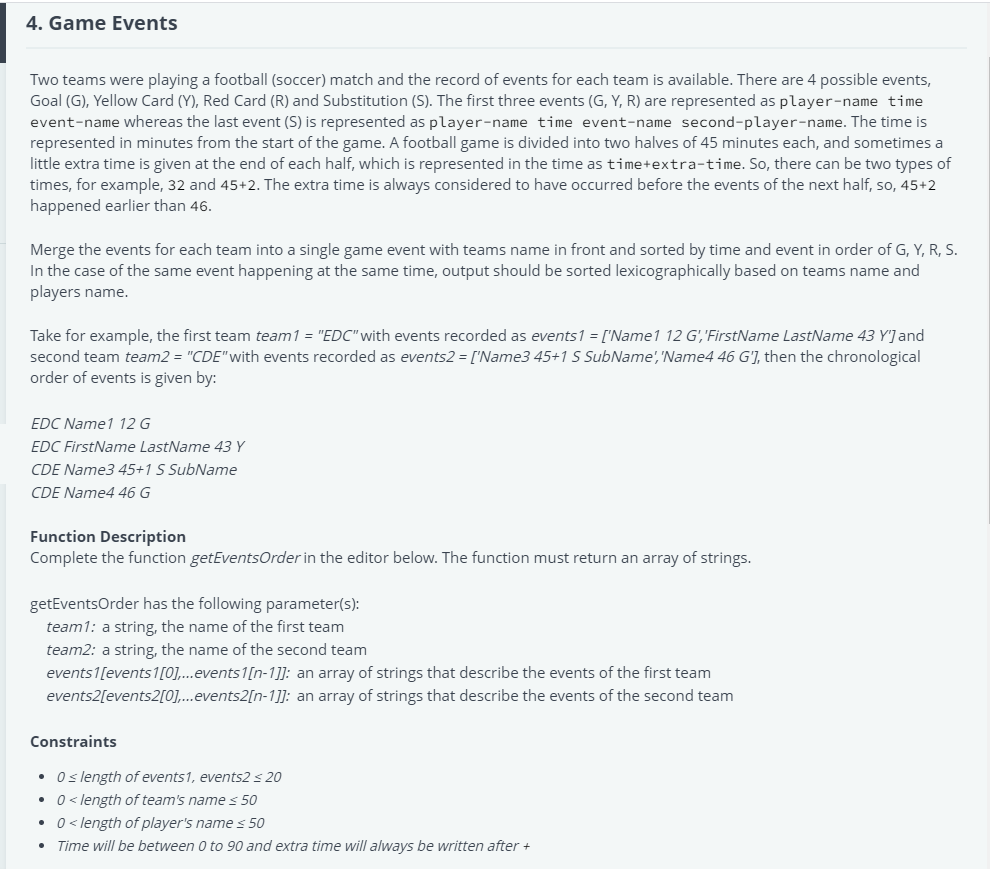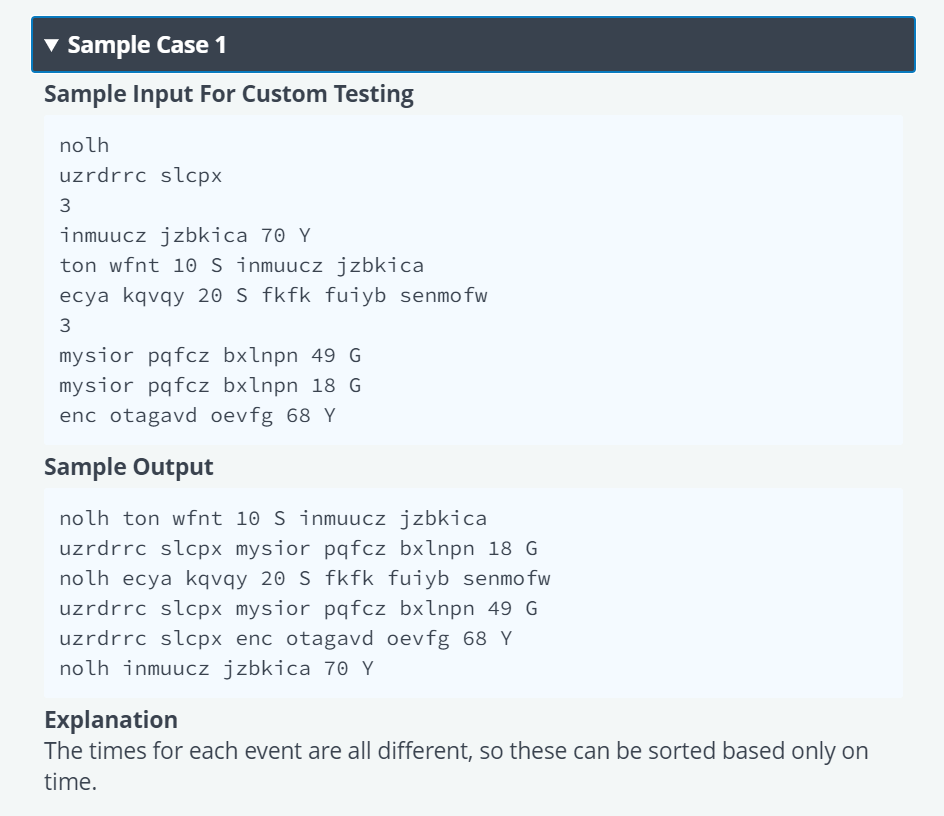Question
Criteria For Solution: -PLEASE USE THE EXAMPLE CODE PROVIDED BELOW -PLEASE SOLVE USING JAVA -WRITE A FULLY ANSWERED, OPTIMIZED, AND DETAILED CODE WITH COMMENTS AND
Criteria For Solution: -PLEASE USE THE EXAMPLE CODE PROVIDED BELOW -PLEASE SOLVE USING JAVA -WRITE A FULLY ANSWERED, OPTIMIZED, AND DETAILED CODE WITH COMMENTS AND SCREENSHOTS -WRITE A FULLY EXPLAINED APPROACH ON HOW TO SOLVE IT AND WHY THAT APPROACH -TIME/SPACE COMPLEXITY ALONG WITH THE WHY -ALL TEST CASES BELOW MUST PASS Java Example Code:
import java.io.*; import java.math.*; import java.security.*; import java.text.*; import java.util.*; import java.util.concurrent.*; import java.util.function.*; import java.util.regex.*; import java.util.stream.*; import static java.util.stream.Collectors.joining; import static java.util.stream.Collectors.toList; class Result {
/* * Complete the 'getEventsOrder' function below. * * The function is expected to return a STRING_ARRAY. * The function accepts following parameters: * 1. STRING team1 * 2. STRING team2 * 3. STRING_ARRAY events1 * 4. STRING_ARRAY events2 */
public static List getEventsOrder(String team1, String team2, List events1, List events2) { // Write your code here
}
}
public class Solution { public static void main(String[] args) throws IOException { BufferedReader bufferedReader = new BufferedReader(new InputStreamReader(System.in)); BufferedWriter bufferedWriter = new BufferedWriter(new FileWriter(System.getenv("OUTPUT_PATH")));
String team1 = bufferedReader.readLine();
String team2 = bufferedReader.readLine();
int events1Count = Integer.parseInt(bufferedReader.readLine().trim());
List events1 = IntStream.range(0, events1Count).mapToObj(i -> { try { return bufferedReader.readLine(); } catch (IOException ex) { throw new RuntimeException(ex); } }) .collect(toList());
int events2Count = Integer.parseInt(bufferedReader.readLine().trim());
List events2 = IntStream.range(0, events2Count).mapToObj(i -> { try { return bufferedReader.readLine(); } catch (IOException ex) { throw new RuntimeException(ex); } }) .collect(toList());
List result = Result.getEventsOrder(team1, team2, events1, events2);
bufferedWriter.write( result.stream() .collect(joining(" ")) + " " );
bufferedReader.close(); bufferedWriter.close(); } } 

 Test Case #1: ABC CBA 2 Mo Sa 45+2 Y A 13 G 2 D 23 S F Z 46 G Test Case #2: nolh uzrdrrc slcpx 3 inmuucz jzbkica 70 Y ton wfnt 10 S imuucz jzbkica ecya kqvqy 20 S fkfk fuiyb senmofw 3 mysior pqfcz bxlnpn 49 G mysior pqfcz bxlnpn 18 G enc otagavd oevfg 68 Y
Test Case #1: ABC CBA 2 Mo Sa 45+2 Y A 13 G 2 D 23 S F Z 46 G Test Case #2: nolh uzrdrrc slcpx 3 inmuucz jzbkica 70 Y ton wfnt 10 S imuucz jzbkica ecya kqvqy 20 S fkfk fuiyb senmofw 3 mysior pqfcz bxlnpn 49 G mysior pqfcz bxlnpn 18 G enc otagavd oevfg 68 Y
Step by Step Solution
There are 3 Steps involved in it
Step: 1

Get Instant Access to Expert-Tailored Solutions
See step-by-step solutions with expert insights and AI powered tools for academic success
Step: 2

Step: 3

Ace Your Homework with AI
Get the answers you need in no time with our AI-driven, step-by-step assistance
Get Started


